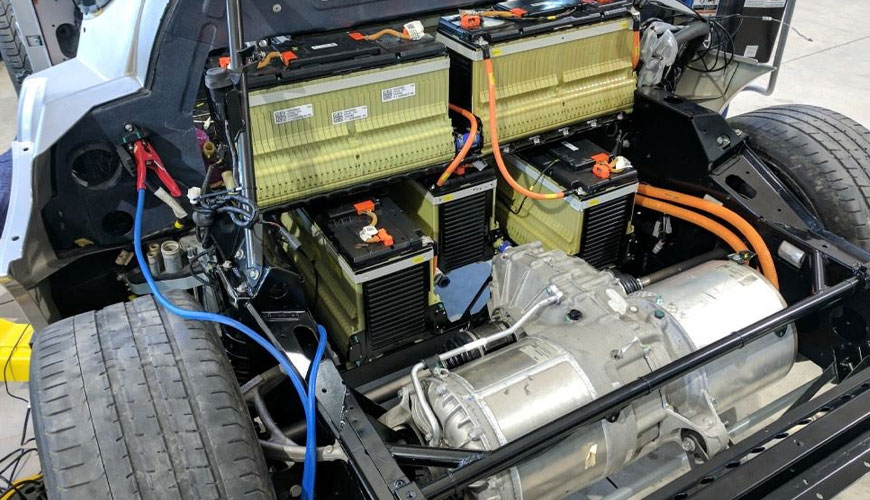

EUROLAB, with its state-of-the-art accredited laboratories and expert team, provides precise and fast testing services within the scope of GB-T 21437-2 test. This standard specifies test equipment, test methods, electrical transient emission and immunity testing requirements for automotive electrical/electronic components along power lines.

This standard applies to electrical/electronic components with a rated voltage of 12 V or 24 V for vehicles of categories M, N, O, L (vehicle power systems such as spark ignition engines, diesel engines, electric motors are not limited to).
The power line transient emission and immunity tests mentioned in this standard are performed in the laboratory as "bench tests". Some test methods require the use of artificial networks, determined after the vehicle manufacturer and supplier reach an agreement to allow comparability of different results. For the grounding method of the DUT, it must take into account the actual installation of the vehicle and be defined in the test plan. Unless specified in the test plan, the DUT should be placed on a non-conductive material 50 mm ± 5 mm above the ground plane.
Particular attention should be paid to disconnecting the DUT and switching between various operating modes during measurement. DUT test condition requirements will be as specified in the test plan. An appropriate sampling rate and trigger level must be selected to obtain a full transient waveform.
Voltage transients are arcs that occur during electromechanical switching of inductive loads. The arc phenomenon produces complex voltage waveforms in the same circuit as inductive loads, whose properties (eg voltage, pulse duration) are significantly affected by reactive and resistive loads. The characteristics of the test pulses described in this standard are selected to reflect transient waveforms in the DUT power supply circuit with an impedance less than 100 Ω; mainly related to the input filter capacitance of the circuit.
Many microprocessor-based electronic devices have high-impedance power and input circuits that produce significantly different transient voltage characteristics when connected to switched inductive loads. In addition, the actual voltage transient characteristics are essentially non-repeatable and there are obvious differences between successive transients. This pseudo-random behavior often causes the DUT software to malfunction.
EUROLAB assists manufacturers with GB-T 21437-2 test compliance. Our test experts, with their professional working mission and principles, provide you, our manufacturers and suppliers, the best service and controlled testing process in our laboratories. Thanks to these services, businesses receive more effective, high-performance and quality testing services and provide safe, fast and uninterrupted service to their customers.
To get an appointment, to get more detailed information or to request an evaluation, you can ask us to fill in our form and reach you.